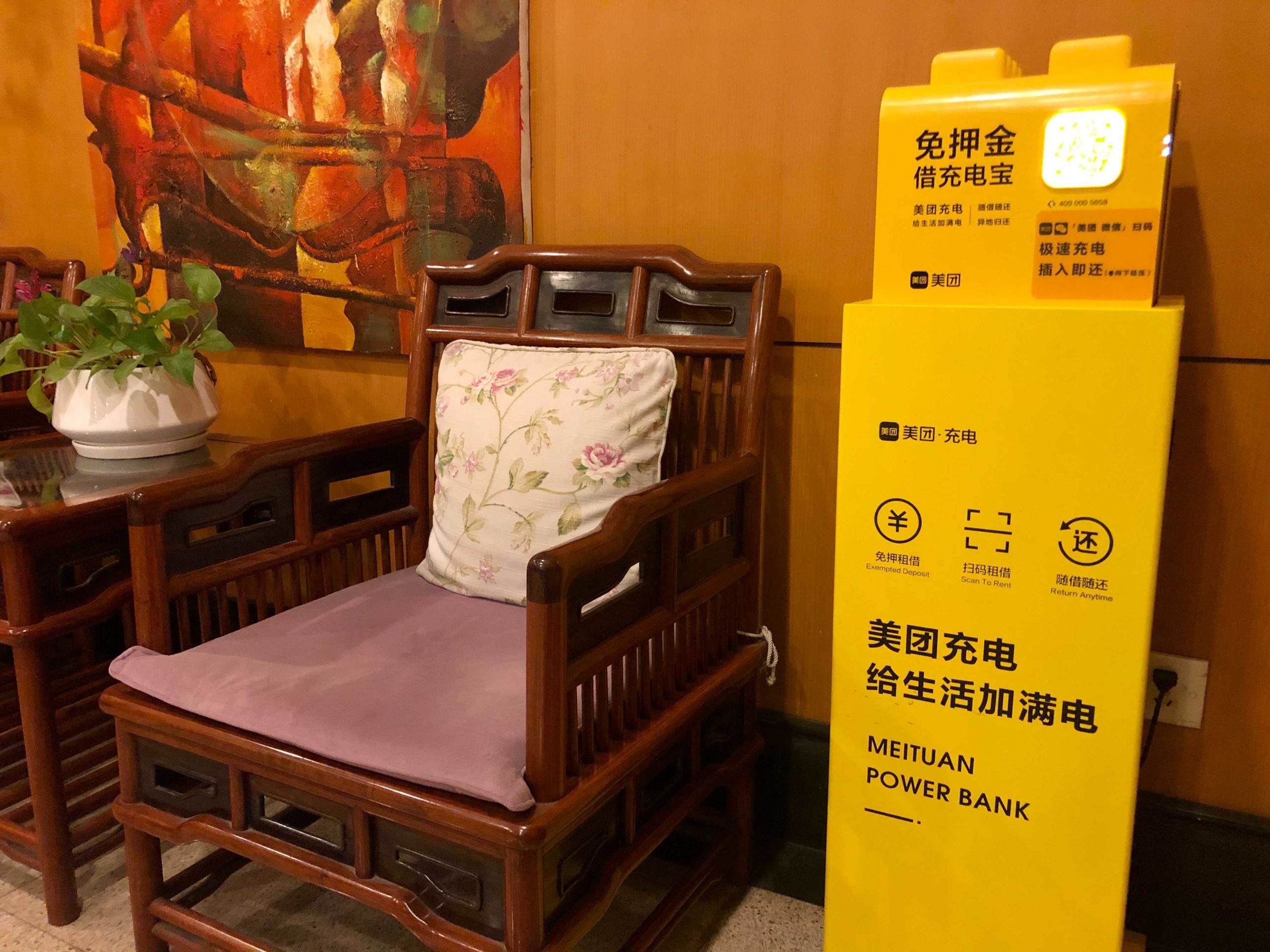How rental mobile phone chargers took over China’s cities
China has a whole industry devoted to renting portable mobile phone chargers to battery-drained customers in restaurants and shops, and it’s worth billions.

In food stalls, hotel lobbies, and crowded shopping malls, there now awaits a contraption holding a trove of energy bars with the ability to restore life.
In the past few years, shared power banks — which dispense portable phone chargers for rent — have become ubiquitous across China’s cities. Third party companies such as restaurants, stores, and malls, make space for the phone charger dispensers and take a cut of the revenues (as much as 50%, according to one Chinese report). China is mobile phone mad, and people are always running out of juice, so the service is very popular.
In December 2020, one industry leader, Energy Monster, offered 664,000 power banks across 1,500 Chinese cities. Its registered users totaled 150 million in 2019 and 220 million in 2020, more than double the active users of Uber worldwide.
Energy Monster’s world debut
While relatively silent up until now, news of China’s shared charging economy spiked in April, when Energy Monster debuted on the Nasdaq valued at $2.1 billion. The publicly listed pioneer is backed by major Chinese tech giants including Alibaba, Baidu, and Xiaomi along with Japanese mobile tech conglomerate Softbank. Following the IPO, two other industry competitors, Jiedian and Soudian, merged to become the new industry leader.
Charger sharing enterprises mirror other upstarts in the sharing economy such as bike-sharing Hello Chuxing, ride-sharing Didi, and office-sharing UCommune: Phone owners rent a portable charger from a nearby power bank with the scan of a QR code, and return the charger at any nearby bank when they are done. But unlike bike, office, and ride-sharing companies, which have famous counterparts overseas, charger-sharing has no clear equivalent outside China.
Inside China, the sector has reached maturity. Smaller participants have gone out of business, leaving four dominant players that now control 96% of the market (in Chinese). They include Jiedian (街电), Laidian (来电), Xiaodian (小电), and Energy Monster (怪兽), with 28%, 16%, 27%, and 25% of the market, respectively. Analysts refer to them as the “three electrics, one monster” (三电一兽) — a concatenation of the second characters of their Chinese names.
The phone charging market will grow from $1.4 billion in 2020 to $16 billion in 2028, according to a bullish report by Shanghai-based firm iResearch. Such optimism about the industry brings new competition: Meituan, the consumer retail giant, recently announced its own phone charger rental business. “In 200 prefecture level cities starting May 2020, we will be placing our power banks in 70,000 to 80,000 businesses per month.” said Wèi Chángsōng 魏长松, head of Meituan’s power bank sharing business. New players have also recently entered the market, including Cloud Charge Bar (云充吧), Beidian (倍电) and Sulv (速绿).
Reach before revenue
The rapid success of power bank sharing was a two-step process. Throughout much of the 2010s, when the very concept of sharing chargers was alien to most people, early entrants set their prices astronomically low, even allowing for free charging (in Chinese), in order to get customers acquainted with the habit of sharing chargers. In this first stage of habit formation, power bank sharing was loss-making.
Though lower prices factored into the industry’s eventual dominance, pervasive smartphone usage and growing reliance on mobile apps were the primary drivers. In 2016, China made up 40 percent of the world’s digital transactions. Chinese consumers are becoming more dependent on their phones for the most basic tasks from buying groceries to deciding where to eat out. In 2019, the average Chinese user spent more than 6 hours a day on their devices, 11% up from the year before, and almost twice as much as the average U.S. user. Digitization is taxing battery life and pushing business toward phone charging rental services.
In 2017, there were 80 million people who rented portable phone chargers. By 2020, there were 290 million users. The rental industry concentrated into a few dominant players and they began focusing on revenues rather than reach, so prices increased from an average of 0.5 yuan ($0.08) per hour to around 4 yuan ($0.62) an hour.
The sudden price hike sparked a public backlash. In March, news of the price change went viral on Weibo (in Chinese) with related hashtags viewed more than 260 million times. Local media reported customer complaints that the charging service was now too expensive. But the grumbling does not seem to have dented demand: According to its prospectus, Energy Monster made $430 million in revenues, up 40% from the previous year. It reached profitability in the beginning of 2019 right around the time of the price increase.
Will battery technology advances destroy the new industry?
Despite its current boom, the phone charging rental business faces some serious risks.
The industry relies on networks of local partners such as restaurants, shops, and hotels, and their foot traffic. The fate of the industry, in other words, is very much tied to that of the offline economy, one that is itself in a state of flux. “The pandemic dealt a fatal blow to the company’s business, with revenues plummeting to a freezing point,” said Táng Yǒngbō 唐永波 (in Chinese), the CEO of Xiaodian (小电).
But with signs of a resuscitated offline economy, and a new IPO, the charging sector might just have the extra juice it needs to make it through the day. But perhaps not the year:
The price of renting portable chargers may have increased due to market consolidation, but the price of buying portable chargers is falling sharply. By mid-decade, the average cost of lithium-ion batteries is projected to drop significantly, according to battery experts.
If cheap portable chargers bode poorly for the rental industry, so too will longer lasting ones. New developments in solid-state lithium ion batteries may double the average battery life of portable electronics. Such technological innovations could be fatal to the charger rental business.






